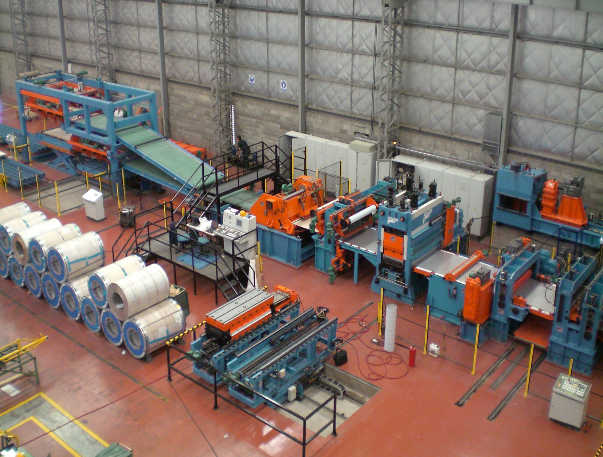
Like many European countries, Spain, with its population of 47 million and ranking as the 13th largest economy in the world in 2013, was hit by the global economic crisis in 2008-2009, which also affected the Spanish steel industry; however, after six years of stagnation, a slow but notable growth can be witnessed in the Spanish steel industry, as stated by the Spanish Association of Steelworks Exporters (SIDEREX).
As of 2013, Spain occupied 16th place among importing countries worldwide and 15th place among exporting countries, while 81.5 percent of all of its exported products consisted of industrial goods, including machine tools, aero-generators and automotive manufacturing. Spain is becoming one of the leaders in automotive manufacturing, ranking 10th in the world with an annual turnover of 2.16 million units.
A capacity utilization level of 69.9 percent in 2013 allowed Spain to rank 16th among global steel producing countries and 5th among EU steel producing countries in 2013. With all this potential, the Basque region plays the main role in the Spanish steel industry, providing one third of the country's entire steel production. In particular, liquid steel production by the Basque region in 2013 accounted for 29 percent of overall Spanish liquid steel production, while total steel output capacity in the Basque region was 39.1 percent of Spanish steel production capacity. Spanish production includes both blast furnace and electric arc furnace (EAF) facilities, with EAF mills accounting for the majority share (10.6 million mt in 2013) and the remainder produced by blast furnaces (3.1 million mt in 2013).

Crude steel production in Spain grew 0.7 percent year on year in 2013, resulting in a total of 13.7 million mt of carbon steel production, while in February 2014 Spanish crude steel producers reached a total output of 2.30 million mt, 10.6 percent higher than the 2013 February level. Spanish production of stainless steel and special steel totaled 13 million mt and 14 million mt respectively in 2013, maintaining the levels reached in 2012. Flat products accounted for 12 million mt of overall Spanish finished steel production in 2013, while long product output amounted to 8 million mt in the given year. However, total steel exports from Spain in 2013 reached 9.7 million mt in 2013, exceeding the steel import volume of 7.6 million mt for the same year. These figures compare with exports of 8 million mt and imports of over 14 million mt in 2007. Currently, Spain has enough capacities to produce and cover steel needs in the domestic market, and, following European market trends and demand, is mainly focused on export supplies, mainly to other EU countries as well as to Latin America.
The focus on export is a common tendency for Spanish suppliers and it is caused not only by modest demand in the local market, but also by the energy reform in Spain that was initiated by the government in July 2013 and which cancelled subsidies for electricity costs. According to this reform, the costs of electricity have been increased several times, and so higher electricity costs have impacted production costs, and as a result steel prices have become stable at high levels.
Taking everything into account, international steel suppliers are interested in the Spanish market and keep stock volumes at their own service and warehousing facilities. For instance, a distributing service center of Tata Steel, Layde Steel, which functions as a warehouse for Tata's products for distribution in the Spanish market and in the EU, at the same time operates as a processor of narrow cold rolled products.
Another notable part of the Spanish steel market is occupied by steel plant equipment producers as well as research and innovation centers, with a total of 75 companies, including ATHADER S.L., JAURE S.A, TALLERES JACO INDUSTRIALS S.L., GLUAL HIDRAULICA S.L., TECNALIA Research and Innovation Center, and INGETEAM POWER TECHNOLOGY S.A. Due to fulfilled capacity potential in the Spanish market, many of these companies are highly focused on export of their services and machines, with exports making up 45-85 percent of their sales volumes in total.